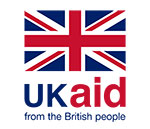Effective management of risks associated with disasters depends on the level of preparedness and communication and information sharing across all levels of government, within humanitarian communities, and across public and private sector organisations. Numerous after-action reports from major incidents have cited communication difficulties as a major failing and challenge for policymakers. There is a need to have a strategy that articulates how information and communications services are provisioned during all the phases of a disaster. Governments have such strategies in place. However, the strategies need to integrate the entire ecosystem and hence the need to have strong governance structures, updated policies and procedures, and trainings plans to ensure policymakers skills are up to date and that information is widely shared and provided to the right people at the right time across all levels of government as well as the people impacted by any threats or hazards. Considering mobile technology has opened the way for ubiquitous services and in different formats over heterogeneous networks, the technology has become critical to the success of disaster response efforts and the broader humanitarian sector. In collaboration with the humanitarian partners, governments are working towards developing industry conducive emergency telecommunications frameworks, often referred to as National Emergency Telecommunications Plans (NETP) aimed at broadening the value and impact of telecommunications in disaster preparedness, response, and recovery. While in 2019, GSMA Mobile for Humanitarian Programme (M4H) supported the International Telecommunications Union in the Development of Guidelines for Development of NETP, GSMA M4H embarked on developing a guide that provides a framework that national government authorities may use to assess the policy ecosystem to specifically support mobile enabled emergency telecommunication services. This will help evaluate the soundness of the existing NETP and chart pathways to refine and maximise the potential of mobile as a lifesaving tool in times of humanitarian crisis. This may help policymakers, regulators and national authorities ensure that national policy frameworks provide for:
- Effective governance and leadership structures across the emergency communications ecosystem;
- Updated and comprehensive emergency communications plans and procedures to address the evolution of risks, capabilities and technologies across the communications ecosystem; and
- Trainings, exercises and evaluation programs to enhance knowledge and bridge capacity gaps at individual, institutional and national levels.
GSMA M4H has developed a brief evaluation guide that may assist national authorities and policymakers tailor their NETP to ensure mobile services are adequately provisioned during emergencies, nationwide operability and interoperability are achieved and diverse communities of responders and regulators have a truly unified vision that allows informational services to be shared as needed, on demand, and as authorised, at all levels of government.


